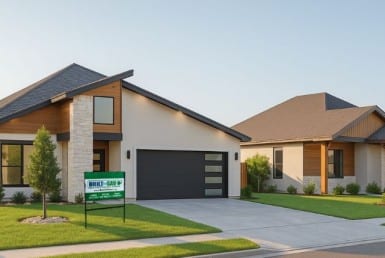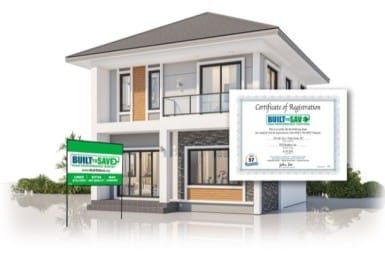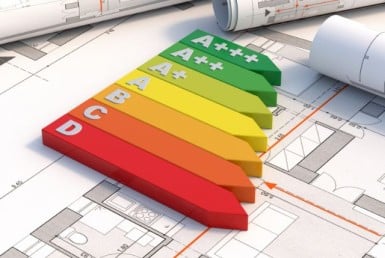How to Spot an Energy – Efficient Home: A Checklist for Buyers
When buying a home, most people focus on what the eye can see—designer ceilings, granite countertops, luxurious flooring, and stylish finishes. While these aesthetic features are appealing, they don’t impact critical aspects of home ownership like indoor air quality, comfort, utility savings, durability, or resale value. A truly valuable home is one that performs efficiently, delivering long-term savings and comfort. For that, you need to knowhow to spot an energy-efficient home. Here’s a practical guide to identifying high-performance homes that meet energy-efficient standards.
What’s Behind the Walls
Energy efficiency starts with quality insulation. Properly installed spray foam, fiberglass, or blown-in cellulose insulation reduces energy loss and keeps indoor temperatures consistent, lowering utility bills.
HVAC System
Heating, ventilation, and air conditioning (HVAC) systems significantly impact energy use.An improperly sized HVAC unit can waste energy and lead to uneven temperatures. Check if the system is appropriately sized for the home and avoid high utility bills, high humidity in your home, and moisture/mold issues in the future.
HERS Score
The Home Energy Rating System (HERS) Index measures energy performance. Minimum building code in Texas requires a HERS score of 65. Ask for the HERS report, especially for homes certified by programs like BUILT TO SAVE® or ENERGY STAR® which require scores superior to minimum code.
Air Tightness and Duct Tests
The State of Texas’ energy code requires all new homes built after August 2016 to undergo testing for air tightness and duct leakage. These tests are performed by licensed home energy raters using specialized equipment to do a blower door test and duct leakage test. A blower door test measures how well the home is sealed against air leaks, while the duct leakage test ensures that the HVAC system’s ducts are properly sealed. Homes that pass these tests not only meet the state’s minimum energy code but also provide better in door air quality, enhanced comfort, and lower energy bills.
Look for Third-Party Certifications
Third-party verification adds credibility to a home’s energy efficiency claims. Programs like BUILT TO SAVE® and ENERGY STAR® ensure that homes meet stringent standards for performance and efficiency. BUILT TO SAVE® focuses on regional needs, particularly in areas like South Texas, where extreme heat makes energy efficiency essential. ENERGY STAR®, a nationally recognized program, requires rigorous testing and certification to guarantee high energy performance. Homes verified through these programs often feature labels or certificates you can request from the builder or seller.
Windows and Doors
Energy-efficient homes feature double—or triple—pane windows, low-emissivity (Low-E)coatings, and insulated frames to minimize air leaks and heat transfer.
Lighting and Appliances
Energy-efficient homes often include ENERGY STAR® certified appliances, LED lighting, and smart thermostats. These features reduce energy consumption and improve the home’s overall efficiency. When touring a home, look for these details, as they can lead to significant savings over time.
Why Energy Efficiency Matters
Energy-efficient homes save on utilities while offering healthier living conditions and consistent comfort. They also have higher resale values, as buyers increasingly prioritize energy performance. In South Texas, initiatives like the Magic Valley Electric Cooperative and AEP Texas High-Performance Home Programs provide builders cash incentives for high-performance homes. Federal tax credits, like the $2,500 45L New Energy EfficientHome Credit for ENERGY STAR® certified homes, further enhance value.
Conclusion
When house hunting, look beyond surface finishes and focus on features that affect comfort and savings. Use this checklist to find an energy-efficient home that provides long-term value. For more information, visit BuiltToSave.org, SouthTXSaves.com, and ENERGYSTAR.gov.
Visit www.BuiltToSave.org to find out more about why you should not settle for a minimum code-built home when you can enjoy the savings and comfort of a high-performance home. You can also find builders enrolled in the BUILT TO SAVE® program offering high-performance homes.
© RGV New Homes Guide, 2025. Unauthorized use and/or duplication of this material without express and written permission from this site’s author and/or owner is strictly prohibited. Excerpts and links may be used, provided that full and clear credit is given to RGV New Homes Guide with appropriate and specific direction to the original content.







